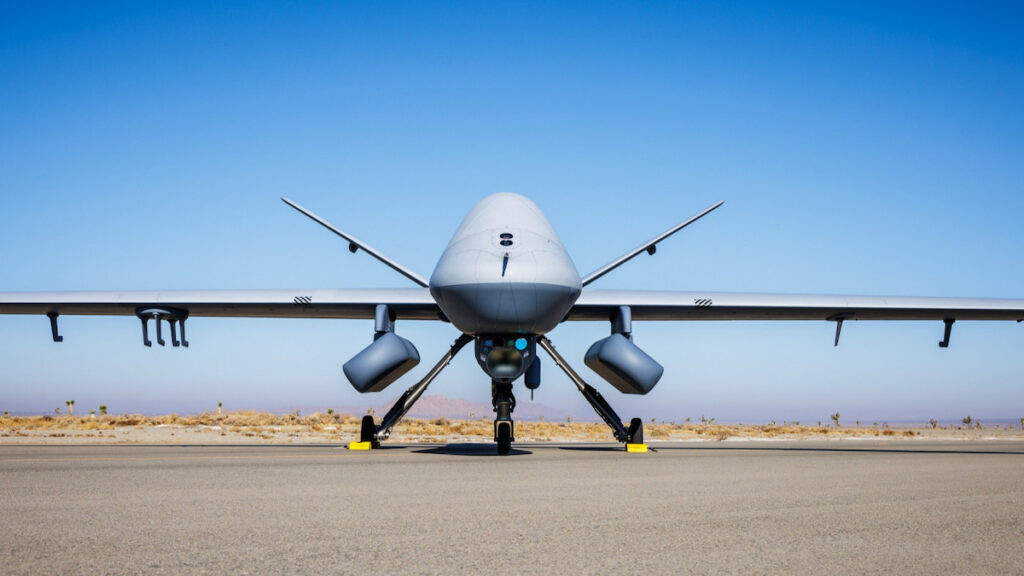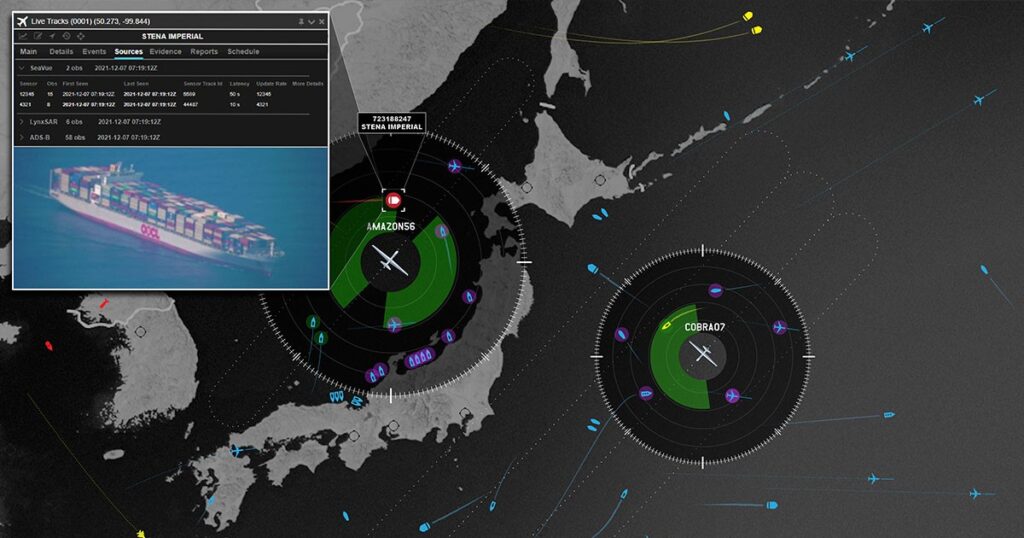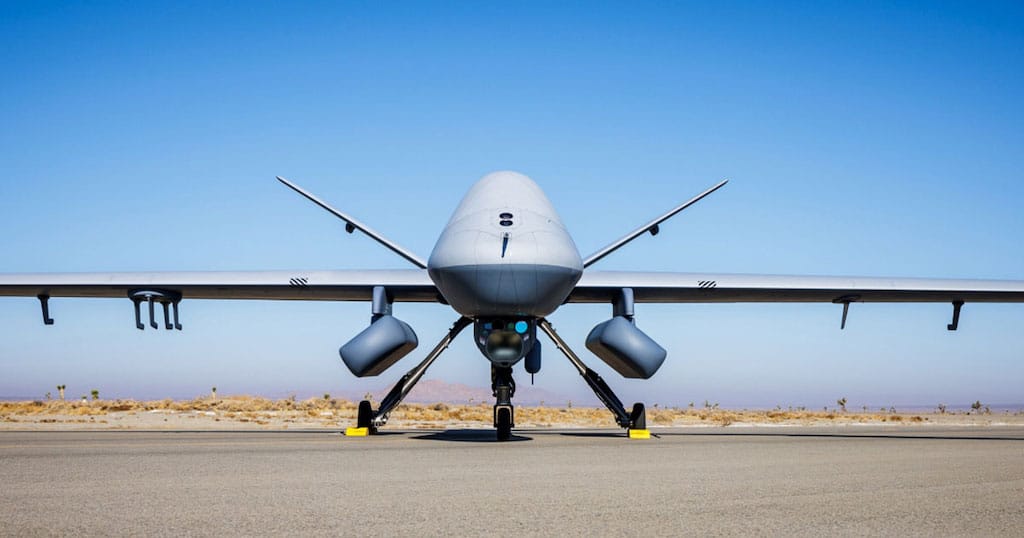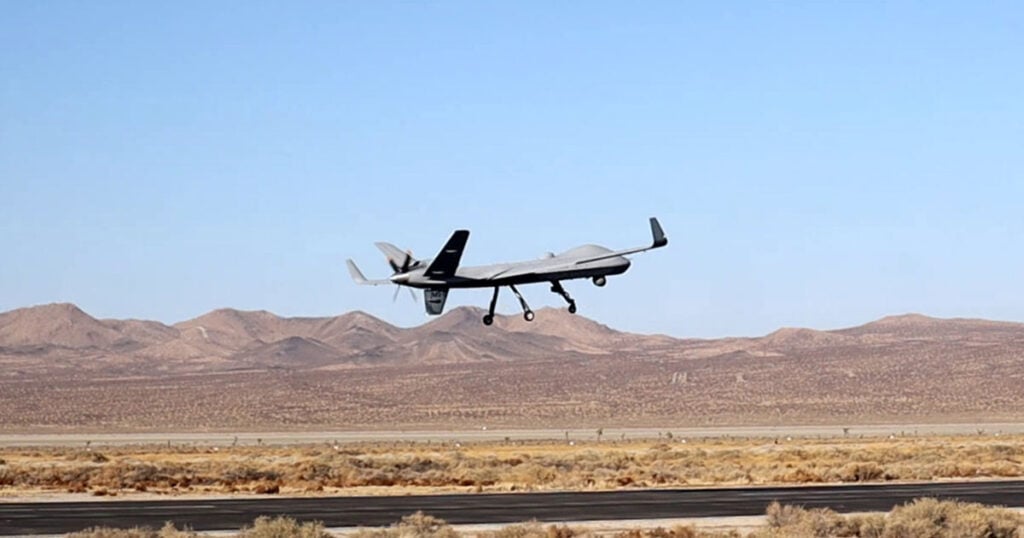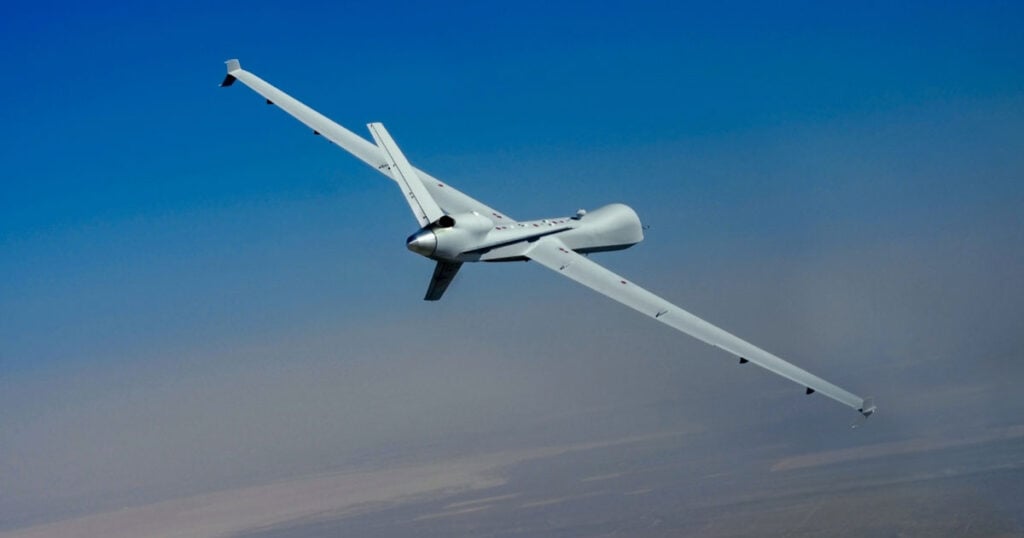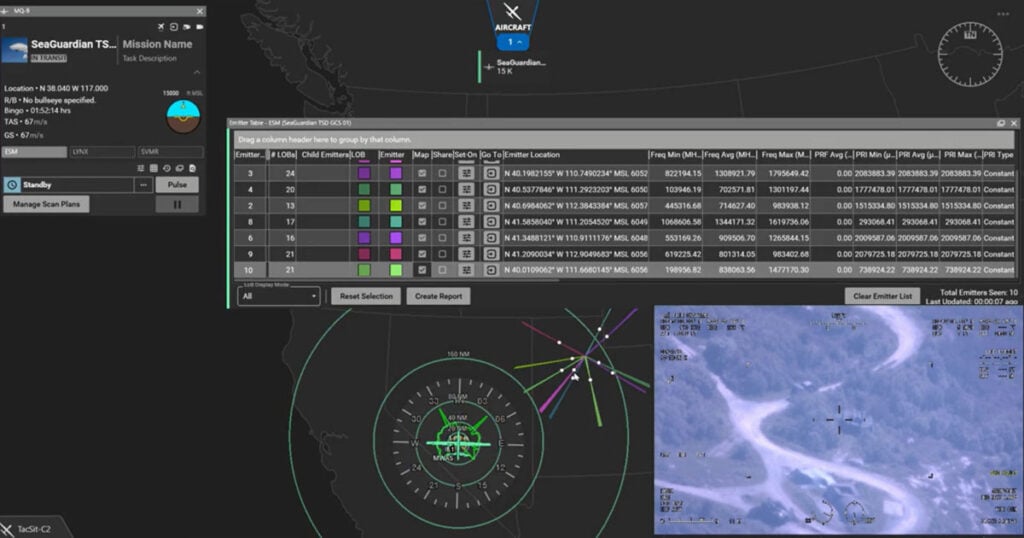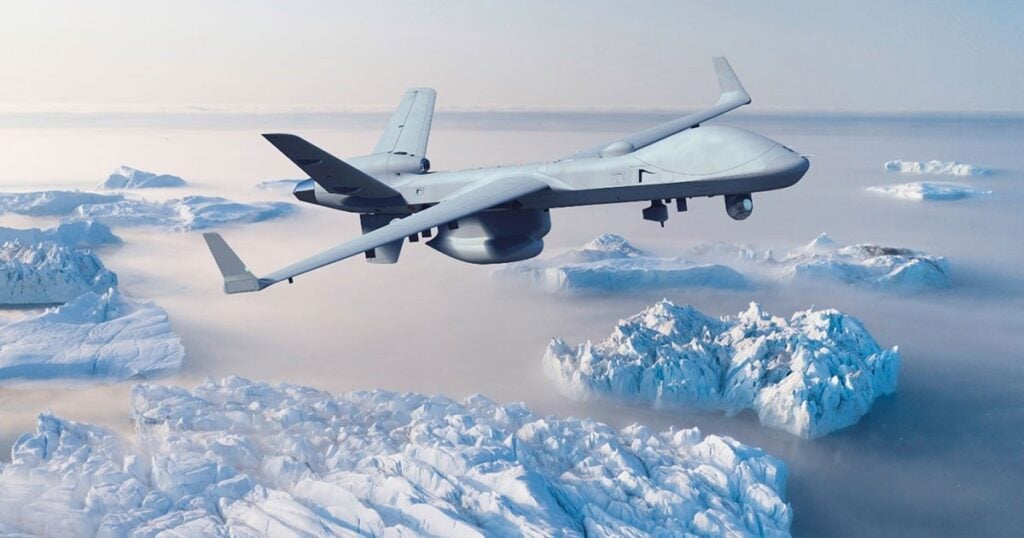
The MQ-9B SeaGuardian® unmanned aircraft system (UAS) from developer General Atomics Aeronautical Systems, Inc. (GA-ASI) is specifically designed to assist the U.S. Navy, U.S. Marine Corps, and allied forces globally in countering peer or near-peer threats.
As one of the most capable and adaptable long-endurance aircraft of its category, SeaGuardian is redefining unmanned aircraft capabilities for U.S. and international forces in maritime missions, including anti-surface, anti-submarine, and electronic warfare for carrier strike, surface action, and amphibious ready groups.
Derived from the MQ-9B SkyGuardian®, SeaGuardian originates from the world’s most extensively tested family of remotely piloted aircraft (RPAS) — the Predator®-series multi-mission aircraft, which have accumulated nearly 9 million operational hours.
Built upon the legacy and expertise of its predecessors, SeaGuardian represents the next stage of advanced UAS. It is larger, has extended endurance, covers greater distances, carries a larger payload, and offers superior capabilities compared to others in its class.
Airspace Integration
SeaGuardian is reportedly the first unmanned aircraft in its class to seamlessly integrate into standard air traffic, facilitating airborne surveillance throughout the maritime domain. Its Detect and Avoid System ensures compliance with stringent NATO and military type certification requirements while also being certifiable by civil aviation authorities.
Unlike earlier models, SeaGuardian does not require designated airspace corridors or escort aircraft for takeoff and transition between segregated and non-segregated airspace. Operators can treat it similarly to crewed aircraft by simply filing a flight plan and proceeding with the mission.
GA-ASI recently secured EMAR/FR 145 Maintenance Organization Approval from the French Military Continuing Airworthiness Authority, DSAE, enhancing the company’s ability to support international customers.
All-Weather Performance
Operating in maritime environments presents weather-related challenges, and the MQ-9B is engineered for global, all-weather missions. Featuring an upgraded fatigue- and damage-resistant airframe with a 40,000-hour service life, SeaGuardian is built to endure extreme conditions.
GA-ASI successfully validated MQ-9B’s cold weather performance at its Flight Test and Training Center (FTTC) in Grand Forks, North Dakota, meeting the cold-weather operational needs of Nordic countries.
Mission Payload Versatility
SeaGuardian supports naval operations through its integrated suite of sensing and intelligence capabilities, providing visibility in both the visual and infrared spectra. Its onboard multi-mode radar enables it to detect targets through clouds, fog, mist, or smoke while also capturing data across the radio frequency spectra. Additionally, it can accommodate various specialized payloads to fulfill mission requirements:
- A 360-degree surface search radar enhances broad and detailed surface domain awareness.
- Communications payloads enable the aircraft to function as a key networking node.
- An anti-submarine warfare (ASW) system ensures continuous submarine tracking while maintaining maritime battlespace awareness.
Sponsored by the U.S. Navy for some of the most demanding integrated exercises, SeaGuardian played a critical role at RIMPAC 2024, delivering real-time intelligence, surveillance, and reconnaissance (ISR) data to the U.S. Pacific Fleet Command Center. Utilizing signals intelligence (SIGINT) parametrics and full-motion video, it provided dynamic, real-time tasking to watch floors and intelligence centers.
Detect & Deter
SeaGuardian extends the surveillance reach of strike groups, ensuring critical passages or choke points ahead of the main force are clear of hostile units. The aircraft enhances the situational awareness of large crewed maritime patrol aircraft, giving commanders greater operational flexibility.
Through the use of Optix+ geospatial intelligence software—a component of General Atomics’ Quadratix software enterprise—SeaGuardian enables rapid detection of non-compliant vessels at sea by integrating its sensor data with real-time commercial traffic information.
Throughout demonstrations and exercises, SeaGuardian has consistently demonstrated its seamless integration with U.S. Navy and international forces. With a maximum endurance of approximately 30 hours in certain configurations, it provides a strike group or command with intelligence unmatched in depth and volume.
The MQ-9B SeaGuardian® can locate and identify a vessel of interest, then maintain custody of that target for extended periods. When deployed in coordinated operations with other aircraft, navies and coast guard agencies can monitor key waterways or targets of interest for as long as needed.
Cost-Effective Solution
SeaGuardian delivers substantial cost savings. This advanced UAS offers approximately 80 percent of the capability of a large crewed maritime patrol aircraft while incurring only 14 percent of the cost per flight hour. This cost efficiency makes it practical to deploy SeaGuardians across wide maritime and air domains. If an area of interest is identified, navies can direct crewed aircraft to investigate further, optimizing time, resources, and operational wear.
The MQ-9B SeaGuardian® stands as one of the most capable long-endurance aircraft in its class, delivering persistent maritime domain awareness. With its advanced intelligence, surveillance, and reconnaissance capabilities and flexible payload options, SeaGuardian is a true multi-mission UAS capable of supporting anti-surface, anti-submarine, and electronic warfare maritime operations.





